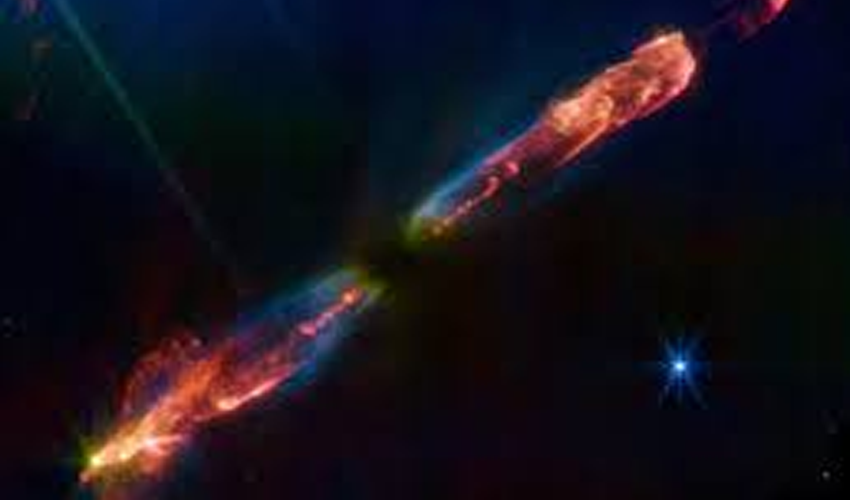The James Webb Space Telescope (JWST) has provided humanity with a breathtaking glimpse into the birth of a star, offering insights into a process that occurred 4.6 billion years ago when our very own Sun was in its infancy.
HH212, a star-forming region nestled in the Orion constellation, has yielded an awe-inspiring image that reveals the celestial spectacle of a star coming into existence, a mere 50,000 years old.
The image showcases the star's birth, veiled behind a dense, swirling disk of gas and dust, leaving only vibrant pink and red jets emanating in polar opposite directions.
Unveiling the Birth of a Star
HH212's location in the Orion constellation, near its distinctive "belt" of three brilliant stars, places it at a distance of approximately 1,300 light-years from Earth. These vividly colored jets are indicative of the presence of molecular hydrogen, molecules where two hydrogen atoms bond together. Shockwaves traverse the outflows, infusing them with energy and causing them to radiate brightly, captured primarily at the 2.12-micron infrared wavelength.
Dance of molecular hydrogen
Professor Mark McCaughrean, Senior Scientific Advisor at the European Space Agency, explains the pivotal role of these jets and outflows in the star's formation, stating, "As the blobby ball of gas at the center compacts down, it rotates. But if it rotates too fast, it will fly apart, so something has to get rid of the angular momentum. We think it's jets and outflows." The magnetic fields play a crucial part in this process, capturing some of the material coming through the disk and ejecting it through the poles, giving these structures their distinctive bi-polar shape.
The remarkable symmetry of the structures is evident in the image, with the left and right jets featuring knots of brightness.
Observers can count the bowshocks, where faster material collides with slower material, generating these mesmerizing formations.
In a noteworthy discovery, an additional, albeit slightly chaotic, bowshock appears on the right side of the image, likely having a complementary counterpart on the other side. The slightly diminished visibility of the second bowshock results from the lower density of gas and dust in that direction, causing it to appear more diffuse.
Scientific precision unveiled
Astronomers have been studying HH212 for over three decades, periodically capturing images to track its evolution.
The new image from the JWST boasts ten times the clarity of any previous view, allowing scientists to delve deeper into the intricate processes governing star formation.
Researchers are planning to create a movie by combining the entire image history to track changes in the jet structures over time, as well as to measure the speed at which these elements are moving, some of them reaching velocities of 100 kilometers per second and more.
While one might speculate that "HH" stands for molecular hydrogen, it pays homage to George Herbig and Guillermo Haro, who pioneered the study of such objects in the 1940s and 1950s. Their work laid the foundation for our understanding of these celestial wonders.
The James Webb Space Telescope's remarkable capabilities extend beyond the sharpness of its images, offering a broader spectrum of colors detectable by its instruments, making it an indispensable tool for modern astrophysical research.



























